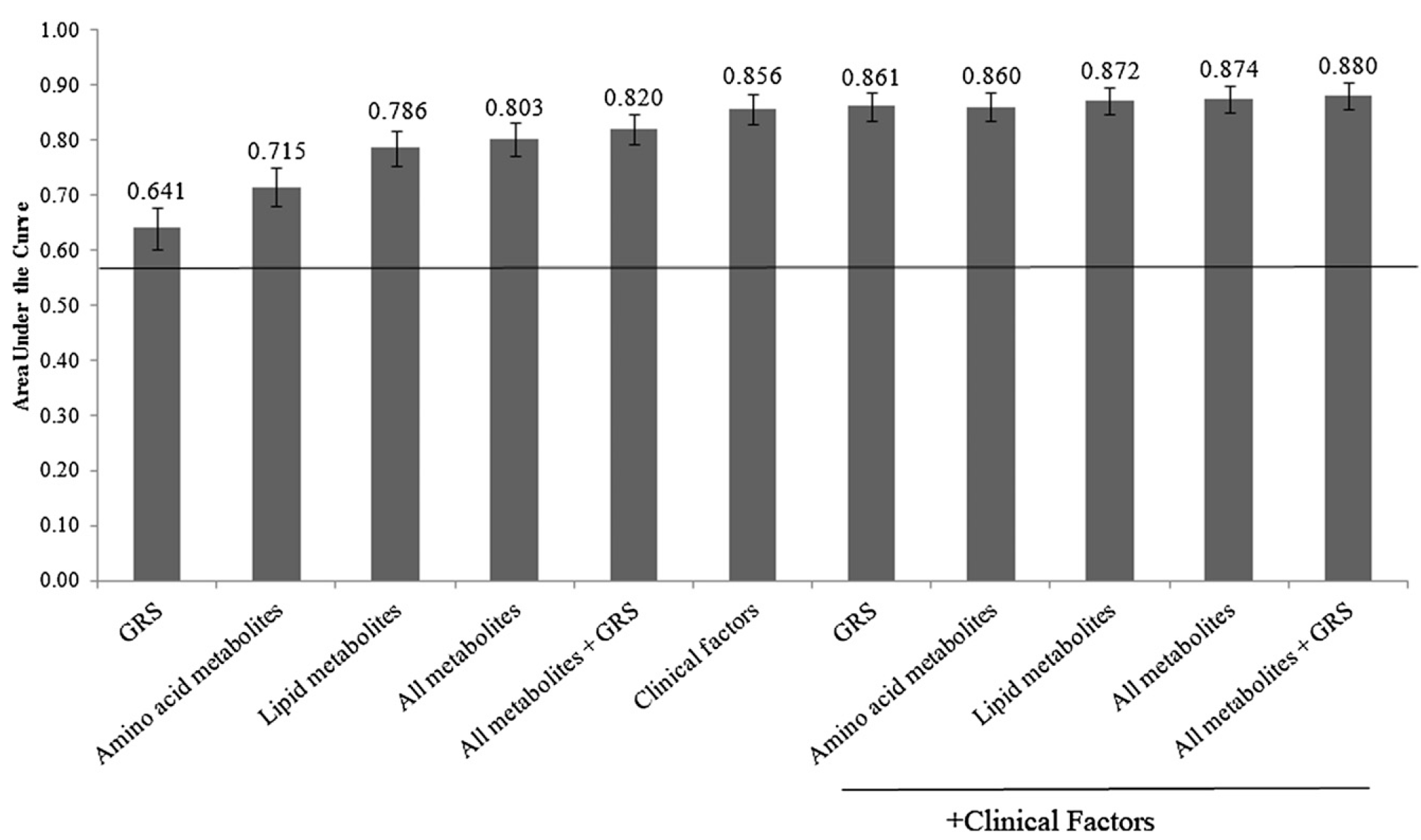Metabolite Traits and Genetic Risk Provide Complementary Information for the Prediction of Future Type 2 Diabetes

OBJECTIVE
A genetic risk score (GRS) comprised of single nucleotide polymorphisms (SNPs)
andmetabolite biomarkers have each been shown, separately, to predict incident
type 2 diabetes. We tested whether genetic and metabolite markers provide
complementary information for type 2 diabetes prediction and, together, improve
the accuracy of prediction models containing clinical traits.
RESEARCH DESIGN AND METHODS
Diabetes risk wasmodeledwith a 62-SNP GRS, ninemetabolites, and clinical traits.
We fit age- and sex-adjusted logistic regression models to test the association of
these sources of information, separately and jointly, with incident type 2 diabetes
among 1,622 initially nondiabetic participants from the Framingham Offspring
Study. The predictive capacity of each model was assessed by area under the
curve (AUC).
RESULTS
Two hundred and six new diabetes cases were observed during 13.5 years of
follow-up. The AUC was greater for the model containing the GRS and metabolite
measurements together versus GRS or metabolites alone (0.820 vs. 0.641, P <
0.0001, or 0.820 vs. 0.803, P = 0.01, respectively). Odds ratios for association of
GRS or metabolites with type 2 diabetes were not attenuated in the combined
model. The AUC was greater for the model containing the GRS, metabolites, and
clinical traits versus clinical traits only (0.880 vs. 0.856, P = 0.002).
CONCLUSIONS
Metabolite and genetic traits provide complementary information to each other
for the prediction of future type 2 diabetes. These novel markers of diabetes risk
modestly improve the predictive accuracy of incident type 2 diabetes based only
on traditional clinical risk factors.



